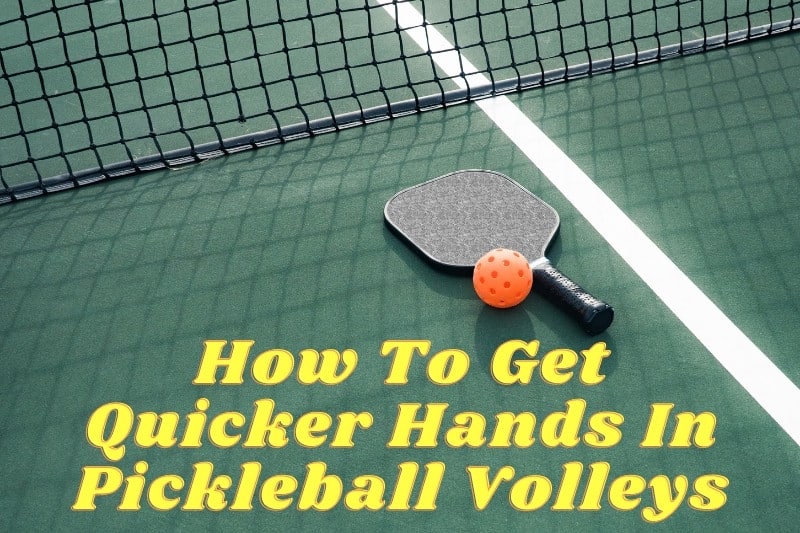
One of the most fun and thrilling parts of playing pickleball is hand battles or volleys. Whether you like to speed up the ball or you want to be ready for your opponent’s speedup, here is how you can get quicker hands in pickleball volleys.
How To Get Quicker Hands In Pickleball Volleys
The fastest way to get quicker hands in pickleball volleys is to practice with a partner to get muscle memory and faster reflexes. But when you practice, you want to make sure you’re using the right techniques that will make the biggest difference. Here are tips to practice with your partner. All you need is a handful of balls.
Minimize Your Movement
Usually, volleys happen at the kitchen net where the distance between you and your partner is about the length of the two kitchens or 14 feet. With such a close distance, you want to minimize having to make as little movement as position. This includes your overall stance.
You want to stand steady with a slight bend on your knees with both your feet pointing away from each other. Minimizing your movement also helps keep your eyes on the ball better. Remember your eyes are bouncing along with your body when you’re moving. By keeping your body stable, you’re keeping your eyes movement stable.
Keep Your Paddle In Front Of You
Your paddle should be held up in front of you with a slight favor to your backhand. So if you’re right-handed, you want to angle the paddle slightly towards your left or backhand side. And if you’re left-handed, you want to angle your paddle slightly to your right.
The reason is that if you’re attacking at the kitchen net, you would not want to attack your opponent’s forehand. If you do, they would smash the ball right back. In the same way, your opponents would most likely not speed up a ball to your forehand. They would most likely target your backhand or your body.
Even though you do want to slightly favor your backhand side, you still want to be neutral enough that if a hand is aimed at your right shoulder or hip (if you’re right-handed), you’re ready for it with a strong forehand. If you keep your paddle to favor your backhand too much, you will be stuck holding your paddle in what is called a “chicken wing” position.
Step In The Kitchen
Once you have the stance and paddle positions down, stand directly across from your partner. But instead of standing behind the kitchen line, take a step each inside the kitchen. The reason to do this during practice is that the shorter the distance between you and your opponent, the less time you have to react.
By standing in the kitchen, you’re training to react even faster. Volley the ball back and forth, aiming for a higher number each time without letting the ball fall. Then, step behind the kitchen as in a normal game and you will be surprised how much slower the ball seems to be.
Take Turns Attacking and Blocking
Next, take turns attacking and blocking with your partner. One person will volley the ball as if they’re attacking and the other person will block. This will help both of you practice blocking during volleys as well as be comfortable hitting the ball back hard. Both attacking and blocking work your reflexes so that you’re ready for either one in a real game.
More Pickleball Tips
Mind Your Position
While volleys in the kitchen are the most common, therefore fast, it does not mean you cannot use a volley in other areas of the court. If you’re in the transition zone and the ball is aimed at your body or your feet, you will have to take the ball in the air.
But recognize that volleys in the transition zone should be treated differently than volleys in the kitchen. You should aim to neutralize volleys in the transition zone rather than counter it back with an attack. You do this by loosening your grip on the paddle while angling your paddle face slightly up. The goal is to have the ball land in your opponent’s kitchen.
The reason you want to neutralize the ball in the transition zone is to buy yourself or your partner time to get up to the kitchen line. You want to look for the most advantageous position to be in when volleying. And that is at the kitchen net in a stable position with your partner.
Read Next: How To Beat Bangers In Pickleball
Read Also: How To Get Better At Pickleball Quick

